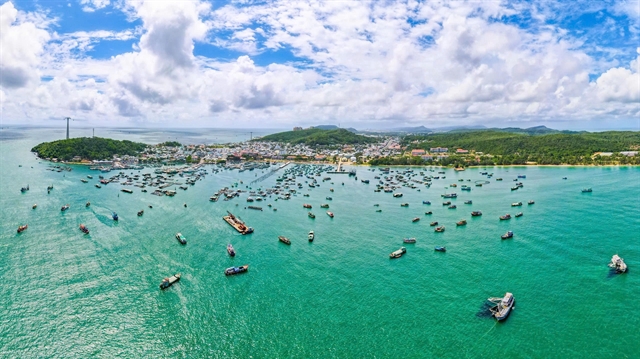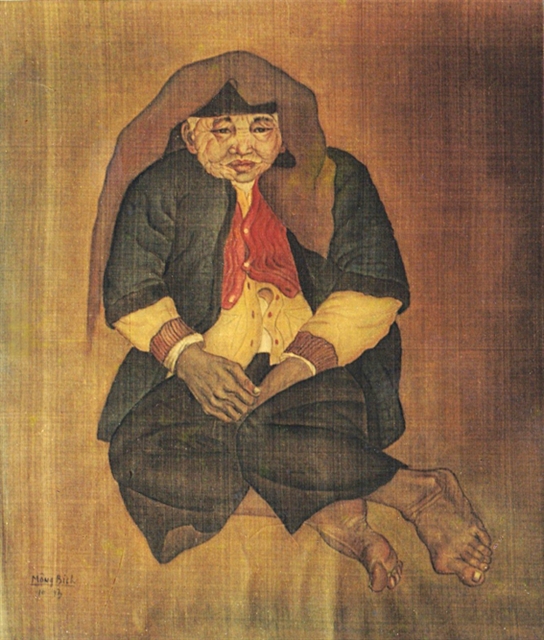 Features
Features
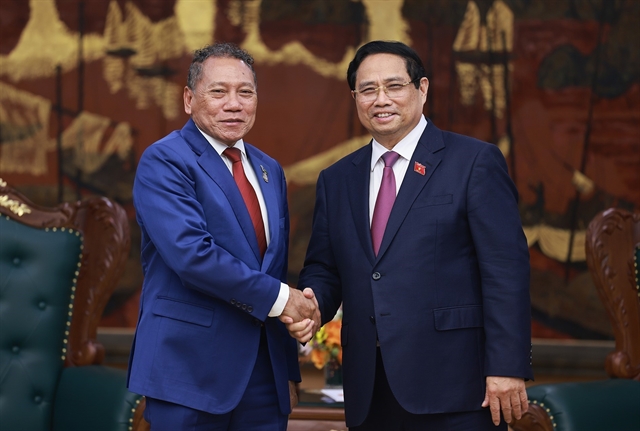
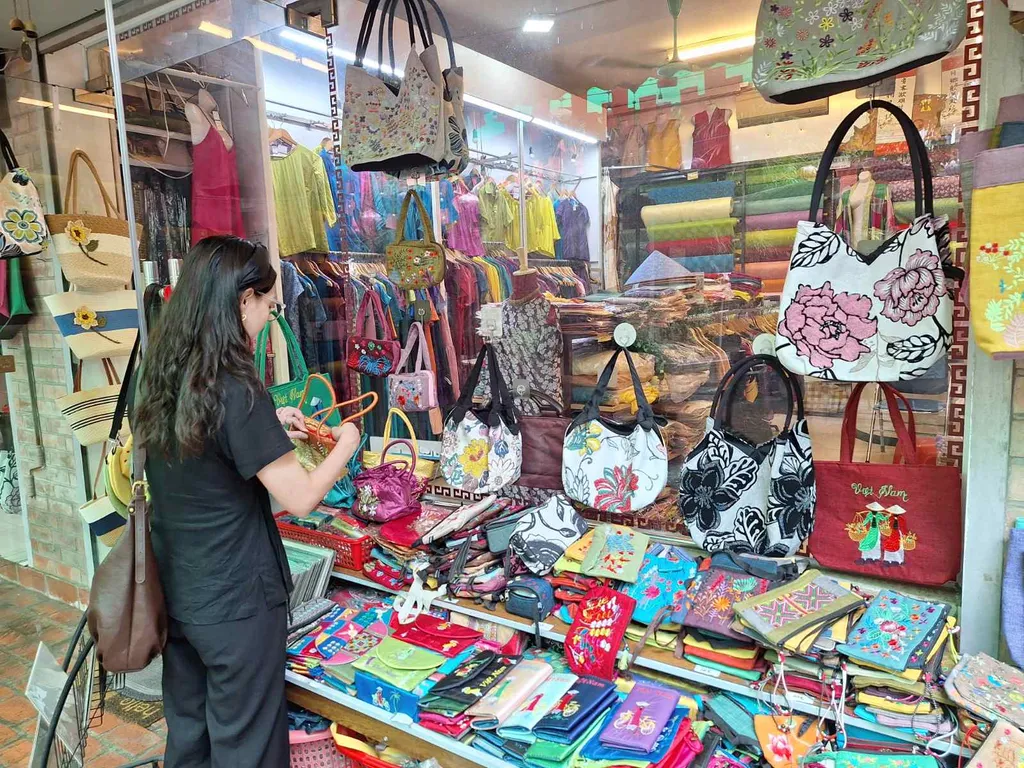 |
| A visitor was shopping at a silk store in Vạn Phúc Village. |
The history of Vạn Phúc Village
Located about 10 km from the centre of Hà Nội, Vạn Phúc Village is one of Việt Nam’s oldest and most celebrated silk-weaving communities. With a history spanning more than 1,200 years, it has long been recognised as the cradle of traditional Vietnamese silk.
According to legend, silk weaving in Vạn Phúc was introduced by Lady A La Đệ Nương, a noblewoman who settled in Vạn Bảo Hamlet (now Vạn Phúc Village) in the mid-9th century. She is revered for teaching local residents how to cultivate mulberry trees, raise silkworms, and weave silk, as well as for reclaiming land and advancing agriculture. Under her guidance, Vạn Bảo flourished into a prosperous community and became the birthplace of Việt Nam’s distinguished silk-weaving tradition.
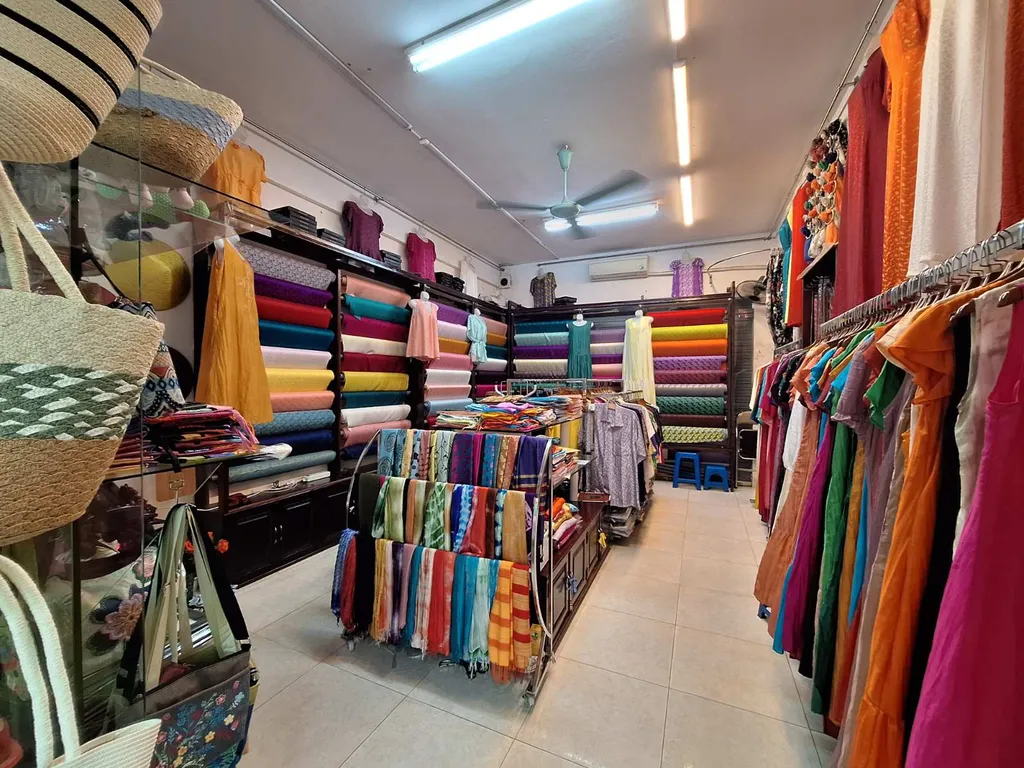 |
| By 1958, Vạn Phúc silk was being exported to Eastern Europe and remains highly valued by both domestic and international customers today. Photo: Thanh Tùng/VNS |
Once known as Vạn Bảo, the village later changed its name to Vạn Phúc to avoid a royal taboo during the Nguyễn dynasty. In 1931, Vạn Phúc silk made its international debut at the Marseille Fair in France, where it was praised as “the most exquisite silk of Indochina.” By 1958, Vạn Phúc silk was being exported to Eastern Europe and remains highly valued by both domestic and international customers today.
Through centuries of change, the artisans of Vạn Phúc have steadfastly preserved their ancestral craft, maintaining the village’s enduring reputation as a leader in Việt Nam’s textile industry. The shimmering, delicately patterned fabrics produced here are not only a testament to exceptional craftsmanship but also a symbol of Vietnamese elegance, artistry, and creativity.
Location
• Address: Hà Đông Ward, Hà Nội
• Distance from downtown Hà Nội: Approximately 10 km southwest
• Travel time: 30–45 minutes
How to get there:
🚕 By taxi or car: Follow Tố Hữu or Nguyễn Trãi Street directly to the village gate. Both ride-hailing apps and traditional taxis are readily available.
🛵 By motorbike: From central Hà Nội, take the Lê Văn Lương – Tố Hữu – Vạn Phúc route. Parking is available near the main gate (VND 5,000–10,000 per motorbike).
🚌 By bus: Several routes stop near the village, including 03, 07, 14, 20C, 26, 32, 36, 50, and 79 — an ideal option for budget-conscious travellers.
Best time to visit
Vạn Phúc Village welcomes visitors all year round, thanks to Hà Nội’s mild climate and the village’s vibrant daily life. However, the best time to visit is in November, when the annual Vạn Phúc Silk Culture Week takes place.
During this festive period, the village bursts into colour with flags, lanterns, and traditional decorations. Visitors can enjoy a lively atmosphere filled with silk fashion shows, weaving demonstrations, folk performances, and local delicacies.
For photography enthusiasts, the village is most enchanting in the early morning (7–9 a.m.) or late afternoon (4–6 p.m.), when the golden sunlight softly illuminates the silk threads and enhances the tranquil charm of this centuries-old village.
Must-see attractions
🏮 The Village Gate
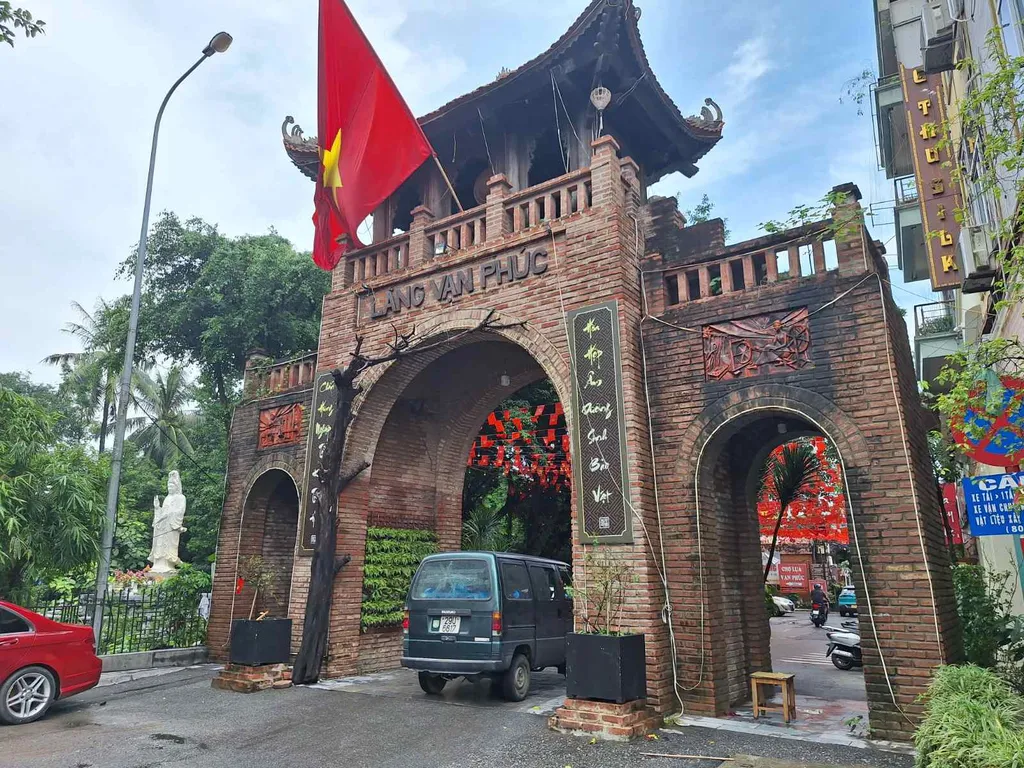 |
| The red-brick gate of Vạn Phúc Village. Photo: Thanh Tùng/VNS |
The red-brick gate of Vạn Phúc, built in the traditional Tam Quan (three-archway) style, stands as an enduring symbol of the village. The words “Vạn Phúc Village” are elegantly carved above the main arch, while bas-reliefs on either side depict scenes of silk production — a proud tribute to the village’s millennia-old heritage.
🏯 Vạn Phúc Communal House
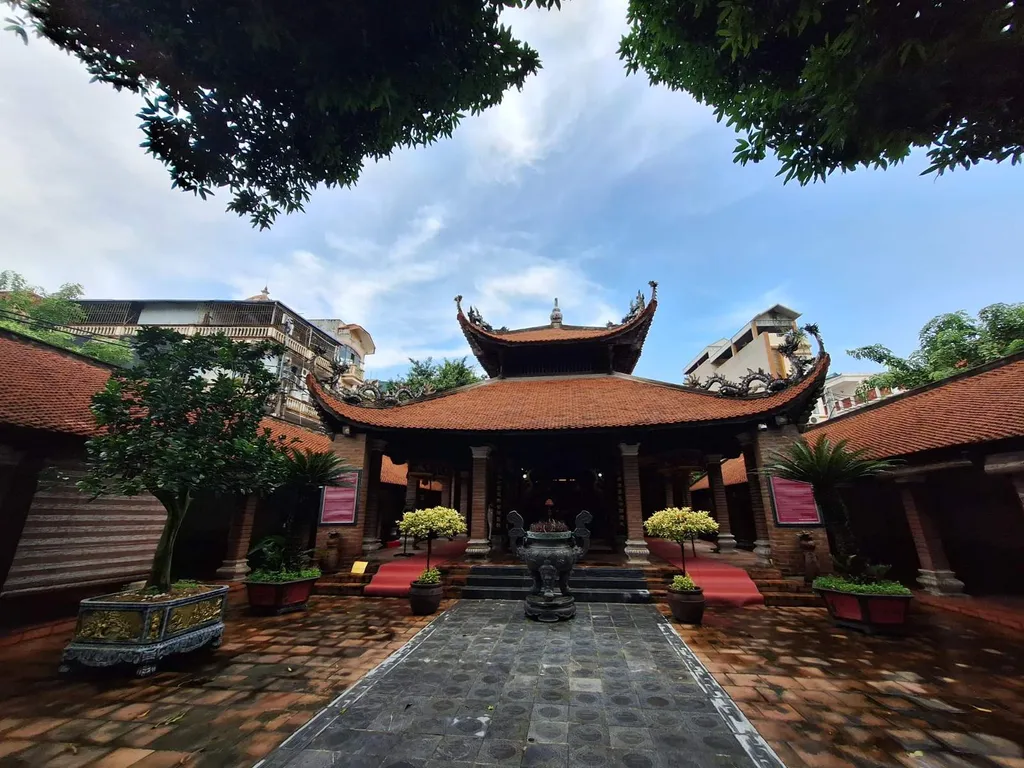 |
| The Temple of Vạn Phúc Village. Photo: Thanh Tùng/VNS |
Located at the heart of the village, this sacred communal house is dedicated to the local tutelary deity, revered for protecting the people and the land. Shaded by ancient banyan trees and facing a lotus pond, the structure embodies the harmony and spiritual richness characteristic of northern Vietnamese villages.
🏠 Uncle Hồ’s Memorial House
A site of great historical significance, this humble house is where President Hồ Chí Minh lived and worked for 16 days in 1946, during which he penned his famous “Call for National Resistance.” Preserved in its original state, the house displays his personal items and traditional weaving tools, offering a meaningful glimpse into Việt Nam’s revolutionary past.
Activities and hands-on experiences
A trip to Vạn Phúc Village offers more than just admiring beautiful fabrics — it’s an opportunity to engage with the living heritage of Vietnamese silk-making through immersive, hands-on activities.
· Visit traditional silk workshops: Tour renowned workshops such as Triệu Văn Mão, Vạn Xuân, or artisan Nguyễn Thị Tâm’s studio to observe the full silk-making process — from spinning and dyeing threads to weaving on age-old wooden looms.
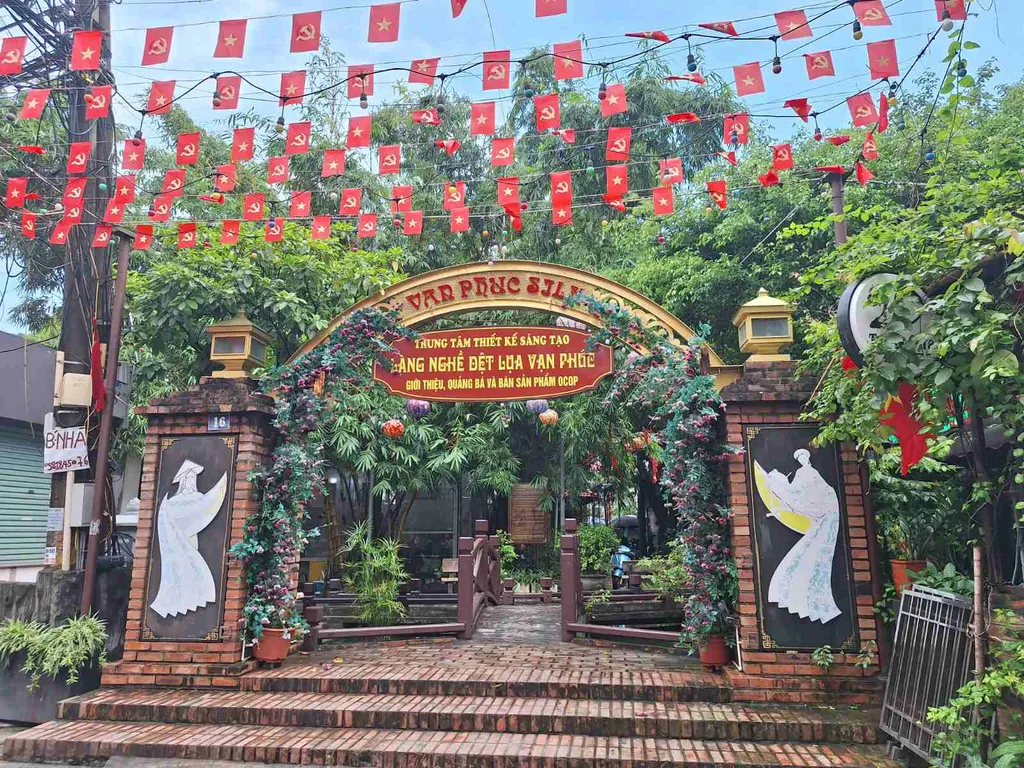 |
| The Creative Design Centre of Vạn Phúc Village. Photo: Thanh Tùng/VNS |
· Try your hand at weaving: Under the guidance of local artisans, visitors can sit at a traditional loom, throw the shuttle, and weave a few rows of silk. It’s a fascinating way to appreciate the patience, skill, and precision that go into every piece of silk.
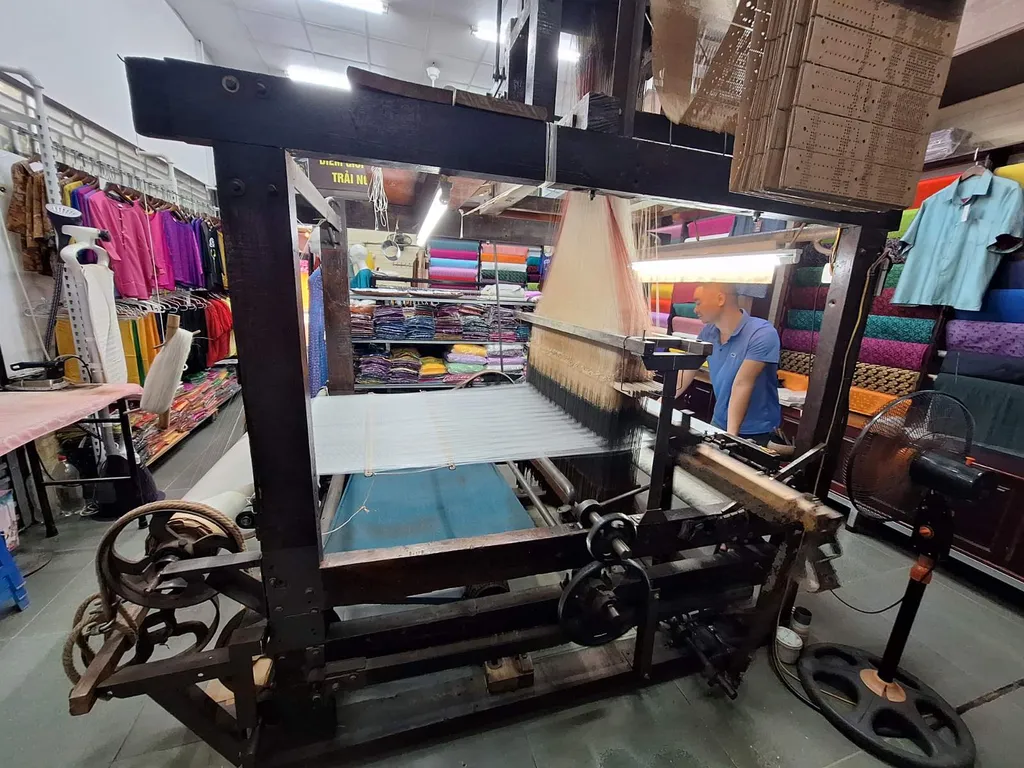 |
| Visitors can sit at a traditional loom, throw the shuttle, and weave a few rows of silk. Photo: Thanh Tùng/VNS |
· Join a silk painting workshop: At the Vụn Art Cooperative, visitors can learn to paint and dye on silk fabric, creating unique, handcrafted artworks — beautiful keepsakes that combine creativity and cultural appreciation.
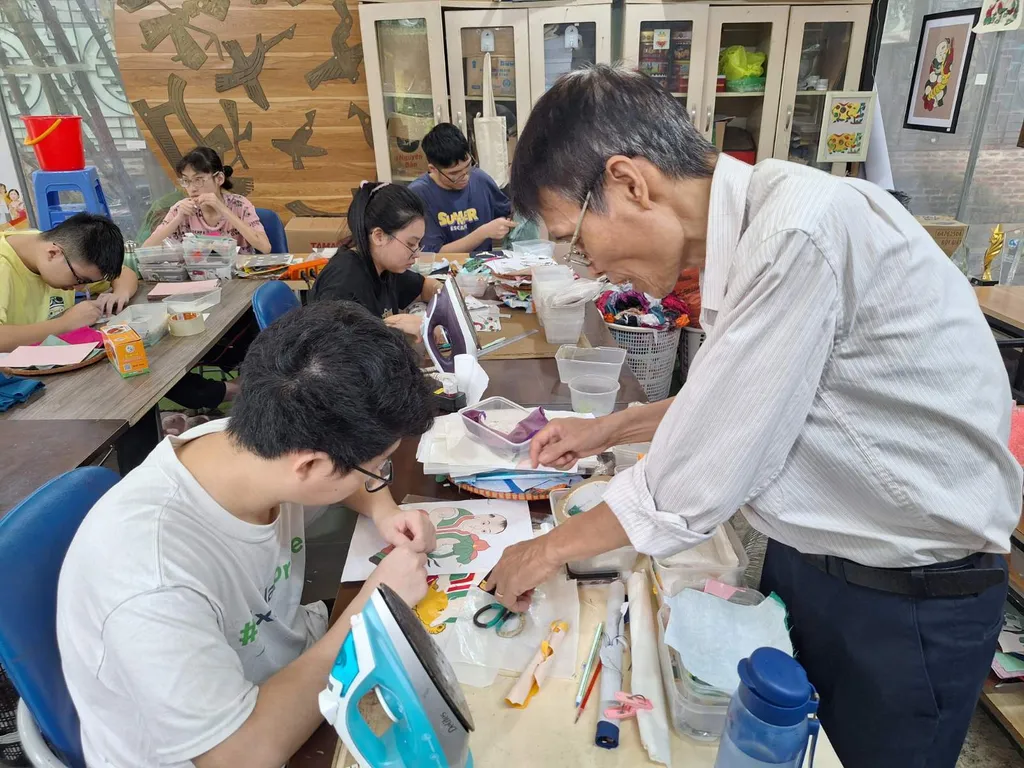 |
| Visitors can learn to paint and dye silk fabric, creating unique, handcrafted artworks in Vạn Phúc Village. Photo: Thanh Tùng/VNS |
· Experience the Vạn Phúc Silk Festival: Held annually in the 11th lunar month, the Vạn Phúc Silk Festival honours the village’s founders and celebrates its enduring craftsmanship. The event features colourful parades, Áo dài fashion shows, folk performances, flower markets, and food fairs, making it one of Hà Nội’s most anticipated cultural celebrations.
With over a millennium of heritage, Vạn Phúc Village stands as a living museum of Vietnamese culture, where tradition and artistry intertwine. Here, visitors can witness the meticulous silk-making process, interact with devoted artisans, and immerse themselves in the peaceful rhythm of rural life.
Whether you come to admire the shimmering fabrics, explore its cultural landmarks, or simply enjoy the warmth of its people, Vạn Phúc Village offers an unforgettable journey into the heart of Việt Nam’s silk legacy — a place where the threads of history continue to weave the beauty of the present.-VNS

